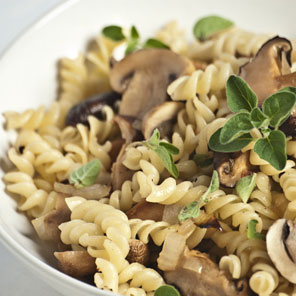The Culinary Herbs You Must Grow At Home
- Pooja

- Oct 10, 2021
- 6 min read
Updated: Jan 8, 2023
Herbs add a fresh flavour to your dish. Fresh herbs can take a dish from good to great. They pull a recipe together by infusing the dish with unparalleled aromas and flavours. Whether fresh or dried, adding herbs is an easy way to increase the flavour and presentation of any dish. A little fresh green leaf is always appreciated!

What are Herbs?
Culinary herbs are aromatic edible plants used in small amounts to add flavour to dishes. Most herbs are used for both culinary and medicinal uses and come from plants that may be used for their leaves, as herbs, and also for their seeds, as spices.

Difference between Fresh and Dry Herbs
Fresh herbs are generally preferred over dried herbs for culinary purposes. While dried herbs are typically used throughout the cooking process, as prolonged heat and exposure to moisture can draw the flavours out of the herbs, fresh herbs are more commonly added towards the end of the cooking process or as a garnish at the end of cooking.

How to clean Fresh Herbs?
To clean fresh herbs, dunk them in a cold water bath and gently move them around in the water to remove any dirt or debris. Shake off the excess water, and carefully pat the herbs dry with soft kitchen towels. More delicate herbs like parsley, cilantro, and chervil should be handled gently, in comparison to sturdy herbs like sprigs of rosemary and thyme.

How to store Fresh Herbs?
Fresh herbs can be stored via two methods: in an organic or cotton produce bag or in a jar filled with water. For cotton bag: simply wash the herbs, pat dry and put them in damp bag in the fridge. For the leafy herbs store them upright in a jar of water, with the leaves sticking out of the top of the jar.

Why Grow Your Own Fresh Herbs?
Growing your own Fresh Herbs is truly rewarding. When you grow your own food, you savor it more because of the effort it took to get to the table. The nutritional value and taste of home grown herbs is superior from market produce as you choose the organic components like soil, home compost and nutrition based on healthier choices you want to make.
List of Top 6 Universal Kitchen Herbs
Basil
Mint
Oregano
Parsley
Rosemary
Thyme
For each herb, you will find below the details on how and where to grow. Herbs are adaptable to different weathers and you can grow them easily in your kitchen, balcony or garden.
Basil
English Name: Basil, bāzəl | Arabic Name: ريحان, rayhan | Hindi Name: तुलसी, tulasi
Basil is one of the most important culinary herbs. It is a hardy herb that grows extremely well both indoors and outdoors. As long as the plant receives the proper moisture and sunlight, it will thrive in any location. Basil comes in many varieties like Sweet Basil, Thai Sweet Basil, Lemon Basil, and Holy Basil. Basil is used in both fresh and dried form to flavor dishes ranging from Italian sauces to meat dishes to Asian curries.

Let's learn how to grow Basil
Where: Kitchen, Balcony or Garden
When: Throughout the year
How: In a pot/ container or direct in the ground using seeds or cuttings
Soil: Organic Soil and Homemade or Organic Compost
Sun: Warm environment. Partial Sunlight area in your kitchen/ balcony or garden. Avoid scorching midday sun by moving the pots indoors or covering with a cloth shade.
Water: Give basil water when the soil is dry to the touch, doing your best to water the plant at its base and not all over its leaves.
Harvest: Pick as you go! Clip as many leaves you need to add in your dishes and let the plant continue to grow.
Mint
English Name: Mint, Mint | Arabic Name: نعناع, naenae | Hindi Name: पुदीनाी, pudeena
Mint isn't just a little sprig that garnishes your dessert plate. It is extremely versatile and can be used in both sweet and savory dishes. In the Mediterranean, mint is treasured as a companion to lamb, and is often used in fruit and vegetable salads. mint has tender, bright green leaves that are commonly used in beverages like mint tea and mint juleps, as well as dishes like Vietnamese pho and Thai stir-fry's.

Let's learn how to grow Mint
Where: Kitchen, Balcony or Garden
When: Throughout the year
How: In a pot/ container or direct in the ground using seeds or cuttings. If planting in the garden - ensure separate section for Mint or else it will destroy your other plants. The roots of Mint famously known as runners can spread very fast and damage its neighbouring plants.
Soil: Organic Loamy Soil and Homemade or Organic Compost
Sun: Warm environment. Thrives in full sun as long as the soil remains moist. Ideal growth in morning sun and partial shade during afternoons.
Water: The soil must remain moist at all times. Water everyday if the plant is outside in UAE summer.
Harvest: Pick as you go! Clip as many leaves you need to add in your dishes and let the plant continue to grow.
Oregano
English Name: Oregano, əˈreɡəˌnō | Arabic Name: توابل, tawabil | Hindi Name: ओरिगैनो, origaino
Oregano grows wild in the mountains of Italy and Greece; its Greek name means "joy of the mountain." Oregano's taste is zesty and strong and is commonly used in Italian dishes. It is a hardy plant and makes for a good ground cover.

Let's learn how to grow Oregano
Where: Kitchen, Balcony or Garden
When: Throughout the year
How: In a pot/ container or direct in the ground using seeds or cuttings.
Soil: Organic Soil and Homemade or Organic Compost
Sun: Warm environment. Thrives in full sun as long as the soil remains moist. Ideal growth in morning sun and partial shade during afternoons.
Water: The soil must remain moist at all times. Water everyday if the plant is outside in UAE summer.
Harvest: Pick as you go! Clip as many leaves you need to add in your dishes and let the plant continue to grow.
Parsley
English Name: Parsley, pärslē | Arabic Name: بقدونس, biqadunis | Hindi Name: अजमोद, ajamod
Parsley is a versatile and fresh green herb which is a great addition to sauces, salads, and any dish that could use a pop of color and a touch of herbal flavour. This leafy herb originated in the Mediterranean region and is still used heavily in the cuisines of the area.

Let's learn how to grow Parsley
Where: Kitchen, Balcony or Garden
When: Throughout the year
How: In a pot/ container or direct in the ground using seeds or cuttings
Soil: Organic Loamy Soil and Homemade or Organic Compost
Sun: Warm environment. Partial Sunlight area in your kitchen/ balcony or garden. Avoid scorching midday sun by moving the pots indoors or covering with a cloth shade.
Water: Keep the soil well moist at all time. Ensure to check soil before watering.
Harvest: Pick as you go! Clip as many leaves you need to add in your dishes and let the plant continue to grow.
Rosemary
English Name: Rosemary, rōzˌmerē | Arabic Name: إكليل الجبل, iiklil aljabal | Hindi Name: रोजमैरी, rojamairee
Rosemary is one of the most aromatic and pungent of all the herbs. This herb with needle-shaped leaves is indigenous to Asia and the Mediterranean Basin. This evergreen shrub is a member of the mint family and is classified as a perennial, meaning it continues to regrow on its own each year as long as weather conditions permit. Rosemary bushes can grow to be about four feet tall and four feet wide, with flowers that can be blue, purple, white, or pink.

Let's learn how to grow Rosemary
Where: Kitchen, Balcony or Garden
When: Throughout the year
How: In a pot/ container or direct in the ground using seeds or cuttings
Soil: Organic Soil and Homemade or Organic Compost
Sun: Warm environment. Thrives in full sun as long as the soil remains moist. Ideal growth in morning sun and partial shade during afternoons.
Water: Give Rosemary water when the soil is dry to the touch, doing your best to water the plant at its base and not all over its leaves.
Harvest: Pick as you go! Clip as many leaves you need to add in your dishes and let the plant continue to grow.
Thyme
English Name: Thyme, tīm | Arabic Name: إكليل الجبل, iiklil aljabal | Hindi Name: अजवायन के फूल, ajavaayan ke phool
Thyme comes in dozens of varieties; however, most cooks use French thyme. Undoubtedly thyme is one of the most important herbs of the European kitchen. The aroma it brings on freshly baked dishes is unmatchable. It has a unique earthy flavour and small, pale green leaves. Thyme holds up well to long cooking times and high temperatures, making it the perfect addition to heavy dishes like stews and pasta sauces.

Let's learn how to grow Thyme
Where: Kitchen, Balcony or Garden
When: Throughout the year
How: In a pot/ container or direct in the ground using seeds or cuttings
Soil: Organic Soil and Homemade or Organic Compost
Sun: Warm environment. Thrives in full sun as long as the soil remains moist. Ideal growth in morning sun and partial shade during afternoons.
Water: Thyme is an herb that can thrive with very little watering. You should only have to water this herb every 10 days.
Harvest: Pick as you go! Clip as many leaves you need to add in your dishes and let the plant continue to grow.
Having a little garden to look after and nurture is truly rewarding. Hope you are inspired to grow your own Herbs.
You can shop from our online store for DIY Gardening Kits, Organic Soil, Seeds, Clay Plant Pots and Customised Gardening Kits.
Happy Gardening and Healthy Eating!








































Comments